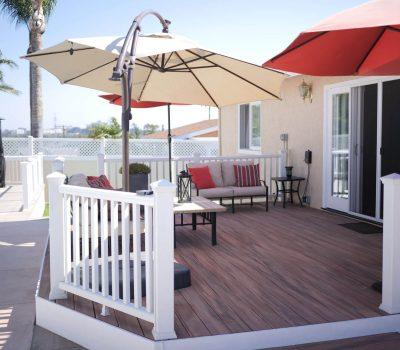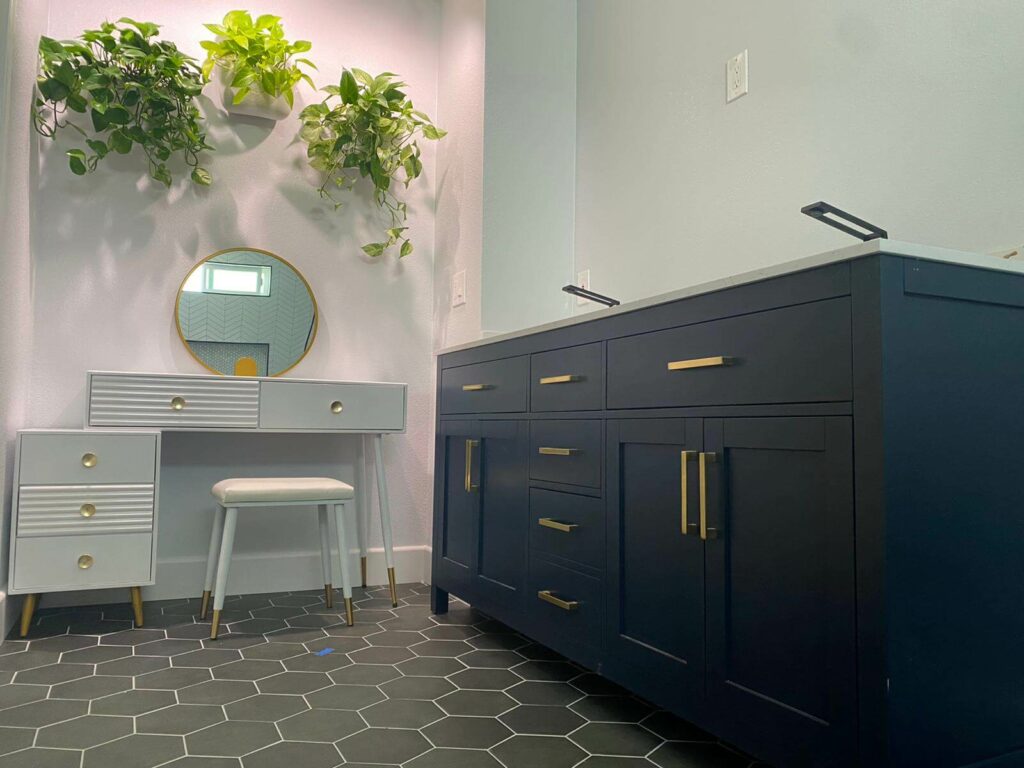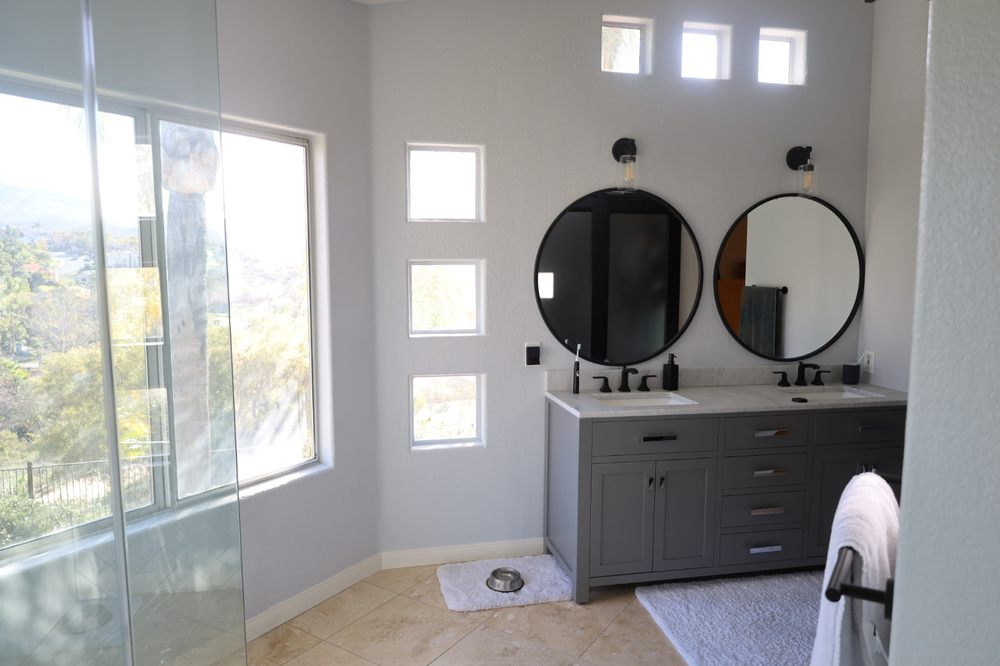Renovating your San Diego bathroom does not have to be a stressful experience. We love providing homeowners comfort and security with helpful articles like this one on budgeting for a renovation.
1. Determine Your Renovation Goals
Before you start crunching numbers, clarify your renovation goals. Are you looking to do a simple refresh, or are you aiming for a complete overhaul? Here are common renovation levels:
- Cosmetic: This includes paint, new fixtures, and perhaps a new mirror. No major changes to layout or structure.
- Moderate: In addition to cosmetic updates, you might replace the vanity, toilet, or add tile work.
- Full-scale: This involves a complete redesign, including changing the layout, replacing the tub and shower, upgrading plumbing, and possibly expanding the space.
2. Itemize Each Component
Break down the renovation into individual components: labor, fixtures, flooring, countertops, cabinetry, lighting, and more. Allocate a portion of your budget to each based on importance and priority.
3. Get A Quote
Contact a local contractor (like Designs 4 You Remodeling) and get a free estimate. These estimates generally include labor costs, material estimates, and any potential additional charges. Having a quote allows you to get a sense of the budget needed for your project. Be sure to work with a design and construction company that is licensed and insured in your area, such as our bathroom remodeling experts here at Designs 4 You Remodeling. We proudly offer free estimates and flexible payment options.
4. Set Aside a Contingency Fund
No matter how well you plan, unexpected expenses can crop up during renovations. It’s prudent to set aside 10-20% of your total budget for unforeseen costs. This could cover issues like water damage behind tiles, outdated plumbing, or electrical issues.
5. Prioritize Spending
Identify the must-haves and the nice-to-haves. If your current shower is in decent shape, perhaps a new showerhead and fixtures will suffice, rather than a full replacement. Alternatively, if your tiles are outdated or cracked, this might be a top priority. Not everything can be safely replaced or repaired without additional work, and often it’s in high moisture environments to start from scratch in many places. Our experts know what to look for as far as water damage and future moisture issues.
6. Choose Materials Wisely
Costs can vary greatly based on materials. For instance:
- Countertops: Natural stone like granite or marble can be more expensive than laminate or tile.
- Flooring: Ceramic tiles might be more affordable than porcelain or stone. If you’re looking for cost-effective alternatives, consider luxury vinyl tiles which mimic the appearance of pricier materials.
- Fixtures: Brass and gold finishes tend to cost more than chrome or brushed nickel.
Always compare quality and price, and consider long-term durability.
7. Consider DIY vs. Professional Labor
Assess which tasks you could potentially tackle yourself. Painting walls, replacing faucets, or installing simple fixtures might be within your capability. However, tasks like plumbing, electrical work, and tile installation is often better left to professionals. Remember, mistakes made during DIY can end up costing more in the long run if you have to hire someone to fix them. We offer a full range of services to cover everyone who wants the best end result possible, in a fast and non-disruptive manner.
8. Plan for Waste Removal & Demolition
Renovations generate waste. We might need to rent a dumpster or hire a removal service to handle old fixtures, tiles, and drywall. This is an often-overlooked cost in renovation budgets. Your project manager will discuss this topic with you, and let you know of any costs and services needed.
9. Understand the Return on Investment (ROI)
While you may not be planning to sell your home immediately, it’s good to know which renovations bring the highest ROI. In many markets, bathroom remodels can provide a significant boost in property value, especially if they transition a half bath to a full bath or add a master ensuite.
10. Review and Adjust
As you begin sourcing materials and getting into the nitty-gritty of planning, revisit your budget if needed. Prices for materials might have increased, or you might discover a new item you want to include. Regularly checking ensures you stay on track.
11. Factor in the Unexpected
Even with the most meticulous planning, you might find out your chosen vanity is out of stock, requiring you to go for a more or less expensive option. Or, once you start demolition, you might find mold issues that need immediate attention. Always remain flexible and be prepared to revisit and adjust your budget as you go along.
12. Finalize Your Financing
Decide how you’ll finance the renovation. Whether it’s through savings, a home equity line of credit, or a loan, ensure you have your financing in order before work begins. If you’re taking out a loan, factor in interest rates and monthly payments into your overall budget.
13. Consider Phasing the Project
If budget constraints are tight, consider phasing the renovation. Start with essential repairs and upgrades, and then move to more cosmetic changes as finances allow. This way, you spread out costs over time and can better manage your budget.
14. Document Everything
Maintain a detailed record of all expenses, from big-ticket items like a bathtub to small expenses like caulk. This not only helps you track spending but also provides a reference for future projects or for potential buyers interested in the recent upgrades to your home.
A successful bathroom renovation doesn’t just hinge on aesthetic choices but also on effective budgeting. With careful planning, the right guidance from a qualified team, and diligent record-keeping, you can achieve the bathroom of your dreams without breaking the bank.






